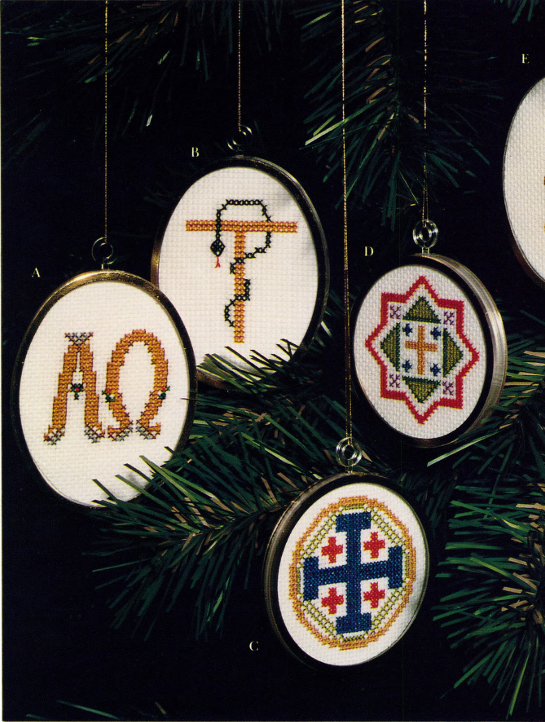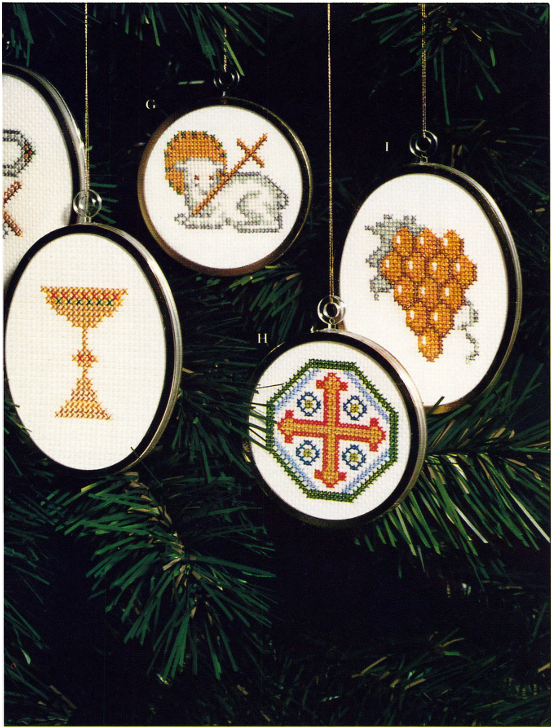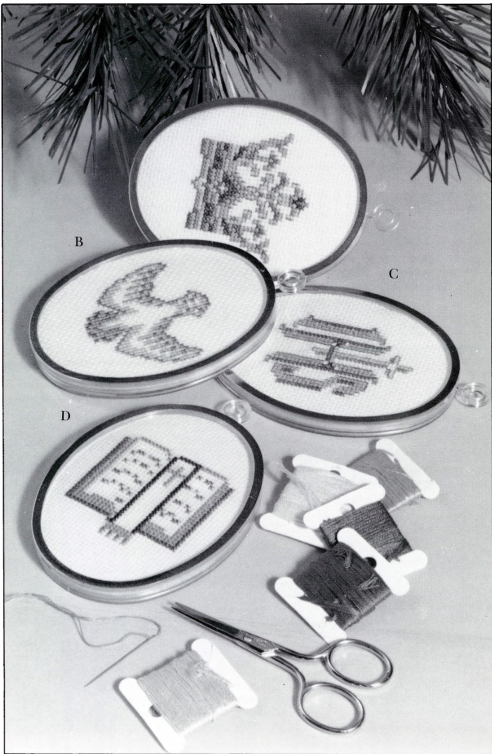In 1957 the Ascension Lutheran Church of Danville, Virginia, added something new to their celebration of Advent. They brought a Christmas tree into their sanctuary and covered it with special three-dimensional symbols and monograms. Mrs. F. Spencer, the creator of these ornaments, called them Chrismons, a word she coined by combining two other words: Christ and monogram.
The idea caught on and spread. Soon other congregations were using Chrismons as part of their worship and celebration. Some of these Chrismons were monograms like the originals in Danville. Others were signs, symbols, or types—all designed to remind worshipers of the Lord and King born in a humble stable on Christmas Day. Since then, the Chrismon tree has been used worldwide to celebrate and proclaim our Lord's name and his saving acts. Churches of all denominations have designed elegant Chrismon ornaments from such materials as Styrofoam, pearls, gold beads, and sequins. When carefully crafted, Chrismons create a dignity and beauty appropriate for a house of worship.
A variation on the three-dimensional Chrismon is the counted-cross-stitch symbol. During Advent members of the American Reformed Church in Orange City, Iowa, hang reversible counted-cross-stitch symbols, framed in lucite, in the thirty glass windows that divide the narthex and the sanctuary. Other churches decorate their trees with cross-stitch symbols, either in place of or alongside of the three-dimensional Chrismon ornaments. Some congregations also use these needlework designs to decorate pastors' stoles, altar cloths, wall hangings, and tree skirts.
Preparing for Chrismons
If you'd like to try Chrismons in your church this year, plan carefully. Remember that the Chrismon tree or display of Christian symbols is significant only when those who see the symbols understand their meaning. A service of dedication and explanation and/or an illustrated pamphlet that interprets the displayed symbols is therefore essential.
If possible, draw on the talents of members of your congregation, both children and adults, in preparing the ornaments. The illustrations below will give you some ideas. You might find others by visiting some of the churches in your community. Some additional resources are listed below.
Above all, remember the real purpose of this tradition: to help us celebrate and remember the birth of our Savior. We read a great deal about commercialism at Yuletide and about attempts to "put Christ back into Christmas." Creating these decorations and then inviting the people of the community to view them and to learn about their meaning is indeed a special way to spread the gospel of God's love and his redemptive act through his Son.
Resources, Patterns, and Supplies
Chrismons
Patterns and complete instructions for making the ornaments, interpretations of the symbols, and a worship program explaining their meaning are available in four separate books: The Basic Series, Chrismons for Every Day, The Christian Year, and The Advanced Series. The books can be ordered from the church's Etsy page.
Needlework Christian Symbols
Patterns and pattern books can be found online. Pinterest is an especially rich resource for finding patterns.
Examples of Counted-Cross-Stitch Chrismons
From Left to right
Alpha and Omega—The first and last letters of the Greek alphabet, referred to in Revelation 1:8: "I am the Alpha and the Omega," says the Lord God, "who is, and who was, and who is to come, the Almighty."
Tau Cross with a Brazen Serpent—A symbol of John 3:14: "Just as Moses lifted up the snake in the desert, so the Son of Man must be lifted up."
Jerusalem Cross (Crusaders Cross)—Emblem of missionary work., "the large center cross represents the original church in Jerusalem, and the smaller crosses represent the four corners of the earth to which Christianity has spread.
Latin Cross—Probably the actual form of the cross upon which our Lord was crucified. The eight-pointed star is an emblem of regeneration or baptism, the triangle an emblem of the Holy Spirit
Chalice—"Then he took the cup, gave thanks and offered it to them, saying, "Drink from it, all of you. This is my blood of the covenant, which is poured l for many for the forgiveness of sins." Matthew 26:27-28
Lamb—Symbolizes the sacrificial life of Christ. "Look, the Lamb of God, who takes away the sins of the world!" John 1:29.
Greek Cross—An ancient cross having arms of equal length. The arms end in an trefoil suggesting the Holy Trinity.
Grapes—Used to symbolize the sacrament of Holy Communion.
From top to bottom
Crown—Symbolizes sovereignty and shows that Christ is the Ruler over all Creation.
Descending Dove—"And the Holy Spirit descended on him in bodily form like a dove." Luke 3:22
I.H.S.—The initial letters of Jesus Hominum Satvator—"Jesus Savior of Man."
Bible—"And beginning with Moses and all the Prophets, he explained to them what was said in all the Scriptures concerning himself." Luke 24:27



